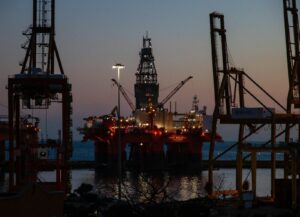The European Space Agency (ESA) has awarded £2m to a project that will use satellite technology to detect methane emissions.
Methane is an extremely powerful greenhouses gas with a 100-year global warming potential 25 times that of carbon dioxide.
Thanks to this funding, Kayrros will combine data from different ESA Sentinel satellite sensors within the Copernicus constellation.
This will allow energy stakeholders and industrial asset owners to take action on methane emissions using near-real-time measurements and rapid processing.
The technology has already revealed dramatic increases in large methane leaks around the world and exposed significantly different regional trends likely due to activity changes, operational practices and infrastructure issues.
The contract will allow Kayrros to leverage more of the Copernicus satellite constellation and expand the existing technical and geographical limits to methane tracking by significantly increasing the number of energy and industrial assets tracked.
In addition to the expertise and support of the ESA, the scientific foundation of Methane Watch technology is backed by the expertise from Kayrros’ scientific partnerships.
Arnaud Runge, ESA Technical Officer for the Methane Watch project, said of the contract, ‘This project illustrates perfectly ESA’s willingness to boost green commercialization, which ESA has defined as one of its top priorities for 2025.
‘We’re honoured to receive this support from ESA, which again acts as an endorsement of the important role of methane detection technology in the fight against climate change,” Kayrros CEO Antoine Rostand said. “Kayrros Methane Watch will continue to provide the data that’s essential to ensuring the world can reach the Paris Agreement goals and we would like to thank all the partners who have helped to make this technology possible, notably our research partner CNES, who played an integral role in its development.
‘Eliminating methane emissions is the “low-hanging fruit” in achieving the Paris Agreement goals and ESA’s support of this technology will play an integral role in helping ensure that these goals are met.’
In related news, a new study has revealed that the Environmental Protection Agency (EPA) is underestimating methane emissions from oil and gas production by up to 90%.
Photo Credit – Pixabay
















